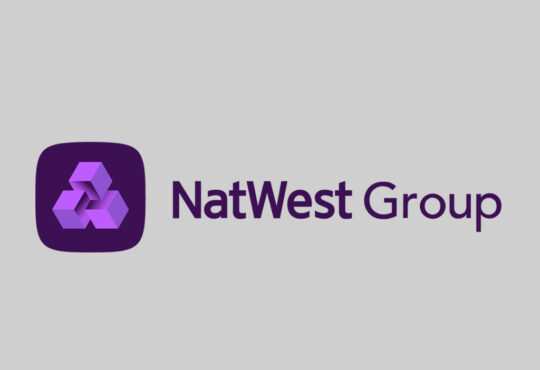
It is undoubtedly a good time to be a bank executive in Ireland.
After years of trying to eke out improved margins from loans in an ultra-low interest rate environment – while at the same time staving off passing negative interest rates onto most deposits – the rates landscape has changed dramatically.
In the space of a year, the European Central Bank has raised interest rates by 4.25 percentage points bringing the base rate back to its record high.
The banks have slowly passed those increases onto non-tracker borrowers and – to be fair – they haven’t passed on the full extent of the rate increases to those variable or fixed rate products.
However, depositors appear to be paying the price for that.
Although the banks have started to improve their deposit rate offering, they are making a killing on excess deposits that they are parking with the Central Bank.
Bumper profits
All three of the main banks – AIB, Bank of Ireland and Permanent TSB – reported massive profits for the first six months of the year.
The Net Interest Income (NII) figure is the one that is particularly eye catching in all three cases.
This is a measure of the difference between the revenue generated by interest-bearing assets – loans – and the cost of servicing liabilities – customer deposits.
AIB reported a near doubling of this figure to €1.77 billion for the half year and upgraded its full year guidance to €3.6 billion from €3.3 billion.
Bank of Ireland reported NII of €1.8 billion, up almost 70%, while Permanent TSB’s measure came in at €298 million – an increase of 92% year-on-year.
While the departure of KBC and Ulster Bank and the subsequent acquisition of their loan and deposit books by the three main challengers contributed to performance on this front, it’s clear that the rates environment played a big role.
And with the European Central Bank signalling more interest rate hikes ahead, and for rates to stay elevated for longer, the banks are likely on course for more growth in this measure.
“If I was asked back in March, I would have had a strong conviction that 2023 would be the peak year for NII (net interest income) in the current cycle. Just given the rates evolution, I’d be less sure about that today,” Mark Spain, Chief Financial Officer with Bank of Ireland told analysts following the publication of the bank’s results this week.

Tracker payback
Trackers were very much the problem child for banks for much of the last decade.
While they generally have a margin of a percent or so attached, they were making the banks little or no return – further diminished by fines arising from the tracker mortgage controversy.
The prospects for this lending class have undergone a complete about-turn in the last year, however.
Tracker mortgage holders have borne the brunt of each and every interest rate hike from the ECB.
Accounting for the average margin of 1.15%, the average tracker mortgage holder is now paying just under 5.5% in interest on their mortgage – up from just over 1% in July of last year.
That has added hundreds of euro, or thousands in some cases, to the annual mortgage repayments for the more than 240,000 tracker holders in Ireland.
Having for years enjoyed rock bottom mortgage repayments, it’s payback time for consumers on their trackers.
AIB’s decision to acquire Ulster Bank’s tracker book with a small discount last year on the basis of the low profitability of the book now looks like a very astute move.
Variable rate comeback?
Once the go-to mortgage product for most home buyers, the variable rate has fallen out of favour in recent years.
As Central Banks globally signalled or implemented rate hikes in response to the inflationary surge, mortgage holders switched in their thousands to fixed rate products to ride out the storm of rising rates.
And for anyone who did that, it was a clever move, locking in rates that will save them thousands in the long term.
However, the banks have not moved on their variable rates to any great extent.
Apart from AIB and its subsidiaries – which had among the cheapest variable rates on the market in the first place – the banks have largely left their variable rates untouched.
That’s a situation that will most likely change in time, but there appears to be renewed interest in variable rates among customers again.
“We have seen a movement in that direction. It’s an early movement,” Eamonn Crowley, CEO of Permanent TSB said this week.
“That’s something we would have seen when rates were at more normalised levels, where customers would have been more in the variable space, but we’ll see how that evolves over time,” he added.

Deposits
This is where pressure will likely come to bear on the banks in the immediate future.
Although they have started to improve their offering to deposit holders, the higher rates mainly apply to regular saver accounts or term accounts where savers lock their money away for a period of time.
Regular deposit accounts and current accounts are still attracting negligible rates of interest.
On the whole consumers are getting a raw deal, but from the bank’s perspective, it appears that they don’t have to incentivise people to put money on deposit with them.
Collectively, we put huge amounts of cash on deposit during the pandemic with little or no interest being paid, driving cumulative household deposits to over €140 billion.
To put it bluntly, why would the banks bother offering better returns when it appears they don’t need to lure us in with our cash piles?
This is a problem of lack of competition, according to Robert Whelan, Managing Director of Rockwell Financial.
He says the state should intervene in the form of post office and the state savings schemes where better rates could drive competition in the market.
Given that the state is still a significant shareholder in both AIB and Permanent TSB, pressure could come via this route either, although officially the Government will say it does not dictate policy to banks that operate privately and independently.
The banks, for their part, say it’s about striking a balance.
“We’ve responded in a measured way,” Colin Hunt, CEO of AIB argued.
“We manage two sides of the balance sheet. We manage pricing for mortgage products, and we manage pricing on the deposit side. We’ve been very restrained in how we’ve responded in term of our mortgage pricing. We led the way on deposits,” he said.
His counterpart at Bank of Ireland, Myles O’Grady, described it as maintaining ‘pricing discipline’.
“So far, we’ve passed on between 1.25% and 1.75% to fixed mortgages, and we’ve deployed new deposit product propositions which included the two-year term deposit offering 2% interest,” he explained.
The banks also point out that they shielded the bulk of their customers from negative interest rates for many years.
In the UK, the Financial Conduct Authority has warned banks that they will face ‘robust action’ if they offer unjustifiably low savings rates to customers.
Whether there is similar appetite here on an official or political level for action is not yet apparent.
However, it may be a case for many of being ‘careful what you wish for’. If banks are forced to raise deposit rates, it will likely be met with further increase in fixed and variable rates on the mortgage side of the business to maintain that ‘pricing discipline’.
Mortgage movers
Another area where pressure may come to bear on the banks is taking on customers of non-bank lenders who are paying interest rates of up to 8%, or in some cases more, on their variable rate mortgages.
As the non-banks are funded via the capital markets, they are more exposed to interest rate hikes, and they are quicker to pass those onto their customer base.
Many mortgage holders would have ended up as customers of the non-banks as a result of loan sales where bundles of mortgages are packaged up and sold on.

Some of those may have had difficulties paying their mortgages in the past and the loans may have been restructured.
The main banks on the whole appear to be positively disposed towards taking on some of those mortgage holders, although they specify that they must demonstrate the ability to repay their loan, usually over a two-year period.
However, the problem for some mortgagees, as financial expert Padraic Kissane pointed out this week, is that they have warehoused portions of loans that need to be dealt with and the question remains as to who will deal with those.
Bad loans and mortgage demand
With all the banks demonstrating good momentum in new lending – reflecting the demand for mortgages – the higher interest rate environment has yet to have a major impact on the mortgage market.
The latest Banking & Payments Federation figures captured a slight reduction in mortgage lending here, but that was mainly accounted for by a falloff in the number of people switching mortgage providers as rate increases started to kick in.
The first-time buyer segment remains robust.
However, the banks’ total loan books are still a fraction of their pre-financial crash levels after bad loans were excised from their balance sheets and consumers paid down debt at a faster pace than they took on new lending.
One key measure upon which a close eye will be kept by analysts in the months ahead is the mortgage arrears figures, or non-performing exposures (NPEs), as the banks label them.
Still an issue for many in the aftermath of the financial crash, an expected surge failed to materialise during the pandemic, despite large numbers of people being temporarily laid off from their employment.
The banks set aside large provisions for potential bad loans which they have now clawed back.
All three lenders made fresh provisions for NPEs in the latest results, although they described them as being largely precautionary and not reflective of a surge in repayment difficulties as a result of the rising interest rate environment.
Indeed, overall NPE levels remained mostly unchanged on last year, but it is a figure that will be closely watched in the months ahead.





